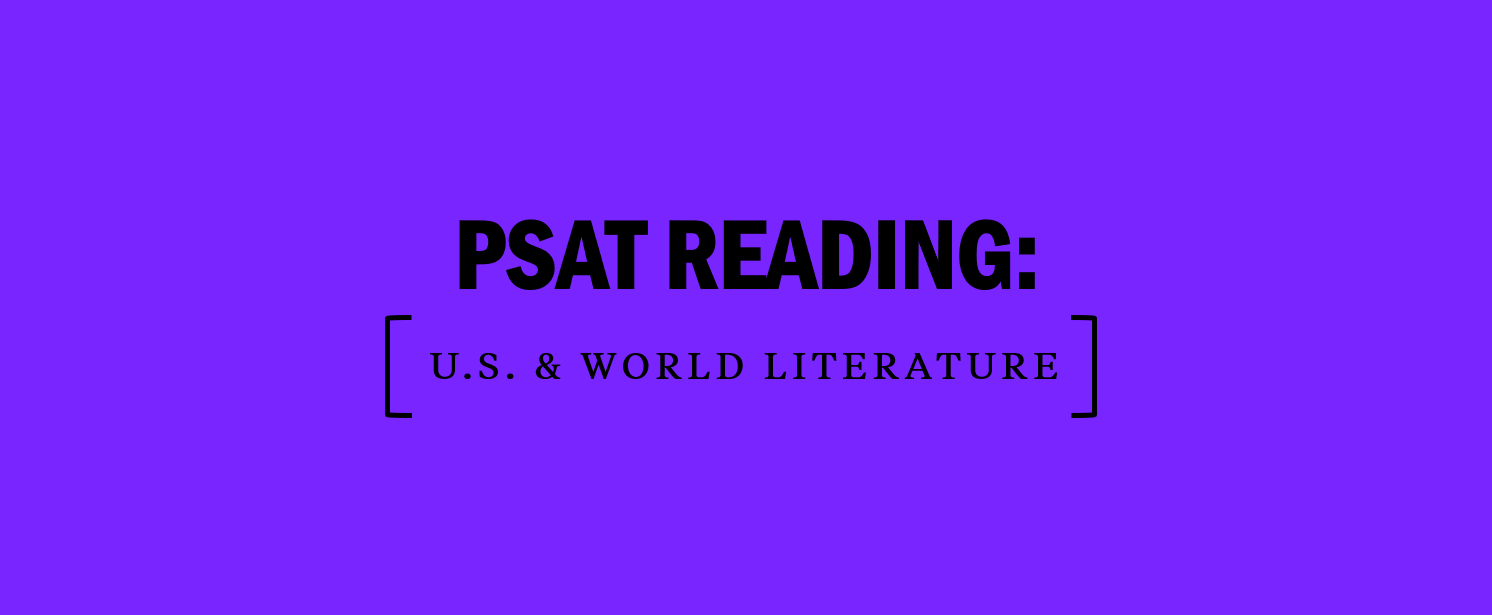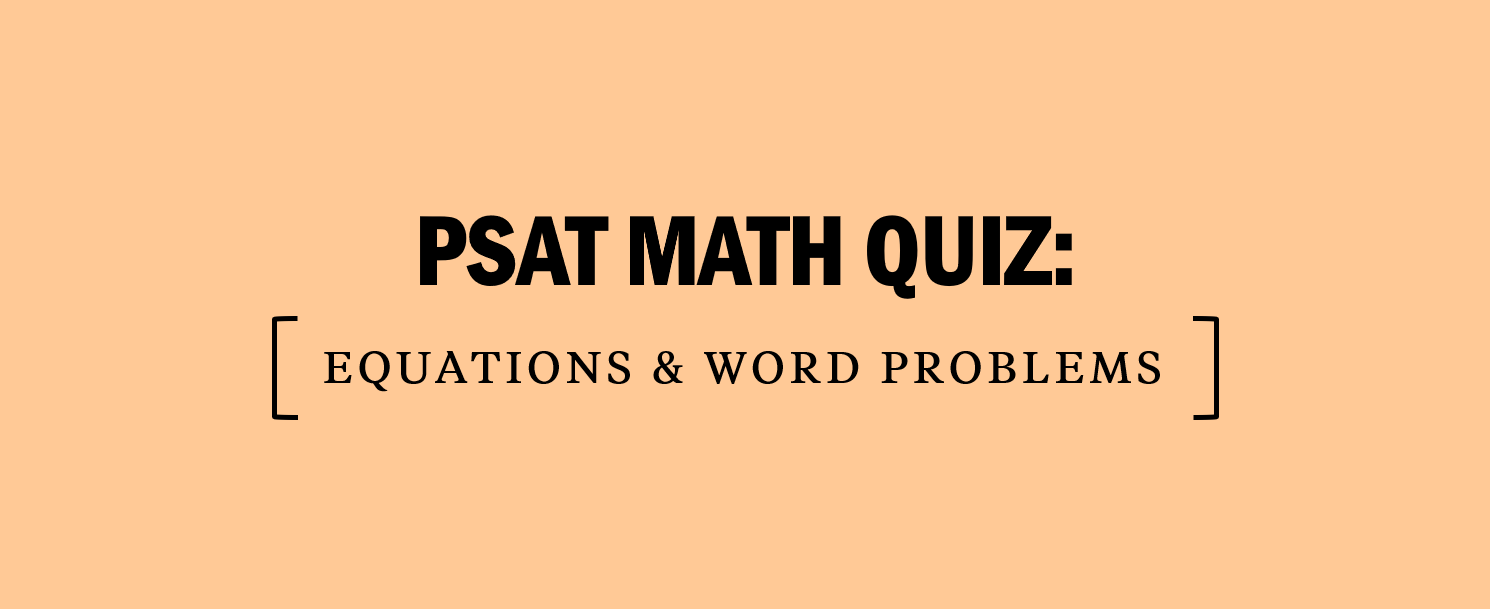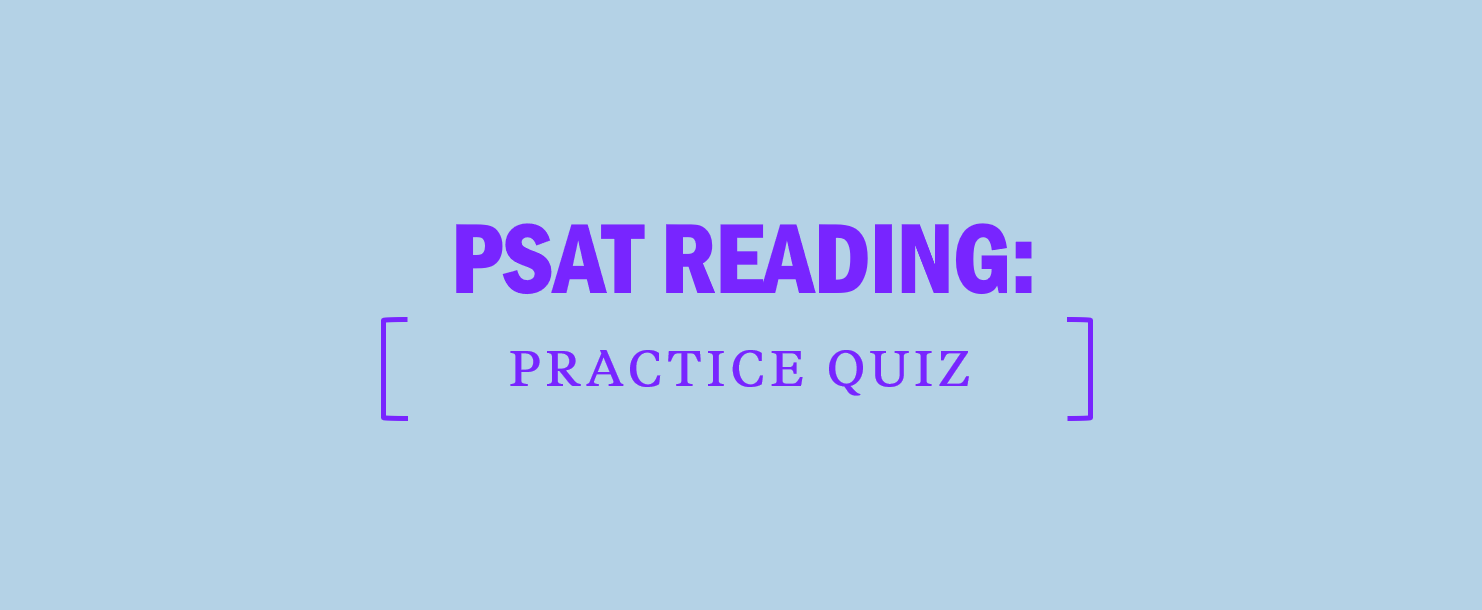PSAT Reading: U.S. & World Literature Passages
Just as reading passages on the PSAT span different genres, your approaches will also vary from subject to subject. Let’s take a look at how to approach U.S. and World Literature passages on the PSAT.
First, know that there will be a single U.S. and World Literature passage on the PSAT. It is different from the other passages because:
- There will be multiple characters and, therefore, multiple opinions.
- The tone will be nuanced and emotion-based, rather than informative or explanatory.
As you read a U.S. and World Literature passage, you should:
Because U.S. and World Literature passages have multiple characters with multiple opinions, remember to keep straight who said what. And as you’re mapping your passage, remember that some paragraphs are longer than others. If you are mapping a very long paragraph, you can write two or three short notes rather than trying to fit everything into just one long note.
Let’s look at the following example of an abbreviated U.S. and World Literature passage and question set. After the mapped passage, the left column contains questions similar to those you’ll see on the PSAT Reading Test on Test Day. The column on the right features the strategic thinking a test expert employs when approaching the passage and questions presented. Note how a test expert can quickly condense the entire passage into a few words, and use his or her Passage Map to ask questions that build a prediction for the correct answer.
Sample PSAT Reading Practice Question: U.S./World Literature
Step 1: Read Actively
Passage Map
¶1: Mrs. H – stroke, widow, owned farm
¶1, cont.: E – raised sheep, succeeded
¶1, cont.: mom, Mrs. H, describes determination of daughter, E (theme)
Question #1 Explained
Step 2: Examine the question stem
- What are the keywords or clues in the question stem? “Main purpose”
Step 3: Predict and answer
- What is the main purpose of the passage? To relay Mrs. Hight’s positive opinion of her daughter, Esther
- What answer choice matches this? Choice (A)
Question #2 Explained
Step 2: Examine the question stem
- What are the keywords in the question stem? “Sheep-raising efforts”
Step 3: Predict and answer
- Raising the sheep is described as what kind of work? “Stubborn work”
- How does Mrs. Hight describe Esther’s attitude toward the work? She says, “she’s been good right along”
- What can you predict? Esther did not give up, despite having been “laughed at.”
- What answer choice does this match? Choice (D)
PSAT Reading Practice Question Explanations
For practice question #1, note that when asked about the main purpose or central theme of a U.S. and World Literature passage, you should look at which character is discussed the most. From the third sentence onward, the story of the passage is really about Esther—her success with sheep farming and her patience in looking after her mother. The purpose of the passage is therefore to describe Esther, which matches choice (A).
For practice question #2, make sure you pay attention to characters’ opinions of each other. In Mrs. Hight’s words, you’re told that even though raising the sheep had been “stubborn work,” Esther had been “good right along”. Choice (D) captures Esther’s approach—not only did she overcome “difficulties” with “determination,” but she also kept “calm” throughout. Choice A is too extreme; Esther didn’t put “success” before all other considerations. She wasn’t “defeated,” B, and she didn’t bow to her “neighbors’ opinions,” C.
Previous: PSAT Reading: How to Raise Your Score
Next: PSAT Reading: History/Social Studies Passages







